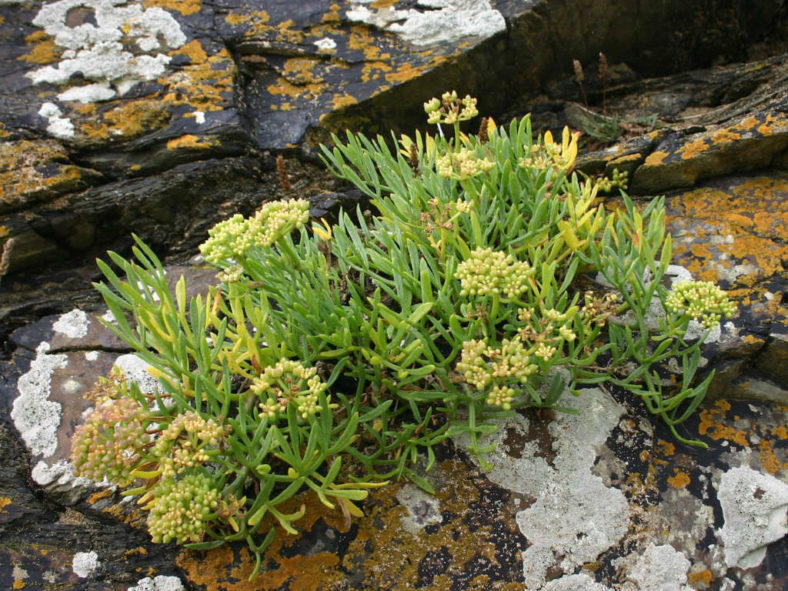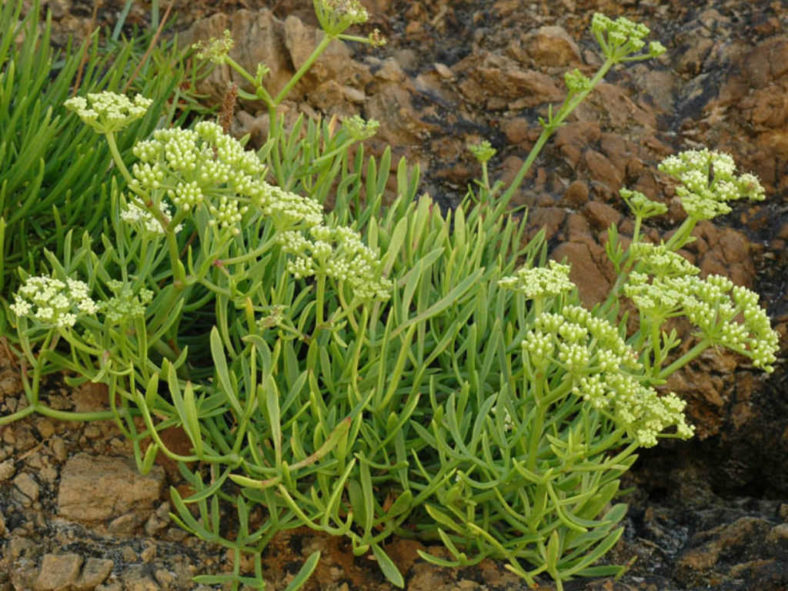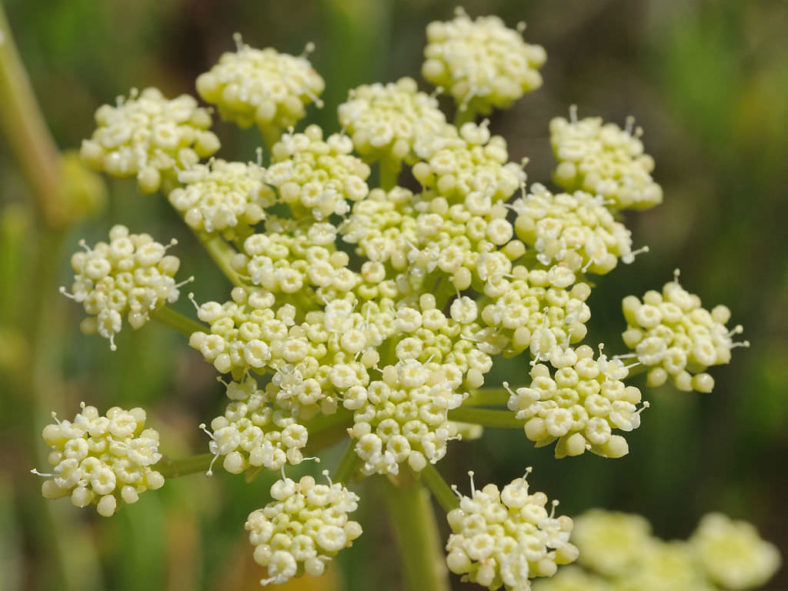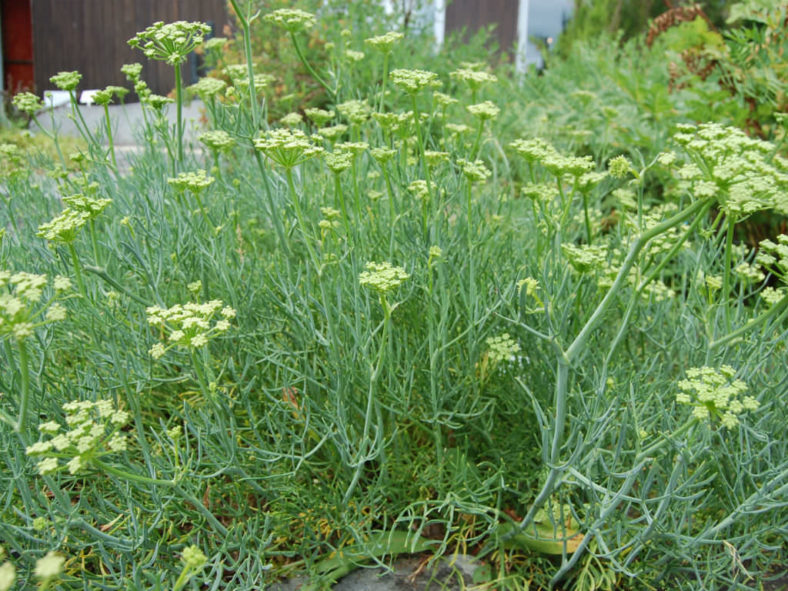Scientific Name
Crithmum maritimum L.
Common Name(s)
Rock Samphire, Samphire, Sea Fennel
Synonym(s)
Cachrys maritima, Crithmum canariense
Scientific Classification
Family: Apiaceae
Subfamily: Apioideae
Tribe: Pyramidoptereae
Genus: Crithmum
Description
Crithmum maritimum is a richly branched succulent with woody-based branches that bear 2 to 3 times pinnate leaves with linear to fleshy oblong lobes. It is an edible plant and can grow up to 1 foot (30 cm) tall.
The flowers are white to greenish-yellow, rarely pinkish, and appear in mid-summer carried in umbels with 10 to 30 rays.
The above-ground parts of the plant are used as food and herbal medicine. In spring, the young leaves and flowers can be collected from plants in good growth and used in salads or vegetables. The taste is loved by some and loathed by others. It is rarely used in today's herbal medicine, but some herbalists still use it for medicinal purposes and recommend it for various ailments.

Hardiness
USDA hardiness zones 7a to 10b: from 0 °F (−17.8 °C) to 40 °F (+4.4 °C).
How to Grow and Care
Growing Rock Samphire in the garden is very easy. Although it is used to salty coastal soil, it will do well in any well-draining soil and has been cultivated in gardens in England for centuries.
Sow seeds indoors a few weeks before the average last frost. Transplant the seedlings outside after all chance of frost has passed.
Rock Samphire can tolerate some shade but will perform best in full sun. Digging a large hole and filling the bottom with gravel is a good idea to make drainage easier. Allow the soil to dry out between waterings.
Harvest young leaves and stems throughout spring and summer by handpicking or cutting with scissors, similar to harvesting the most common herb plants.
Origin
Crithmum maritimum is found on the southern and western coasts of Britain and Ireland, the Mediterranean, and the western coast of Europe, including the Canary Islands, North Africa, and the Black Sea.
Links
- Back to genus Crithmum
- Succupedia: Browse succulents by Scientific Name, Common Name, Genus, Family, USDA Hardiness Zone, Origin, or cacti by Genus
Photo Gallery
Click on a photo to see a larger version.


